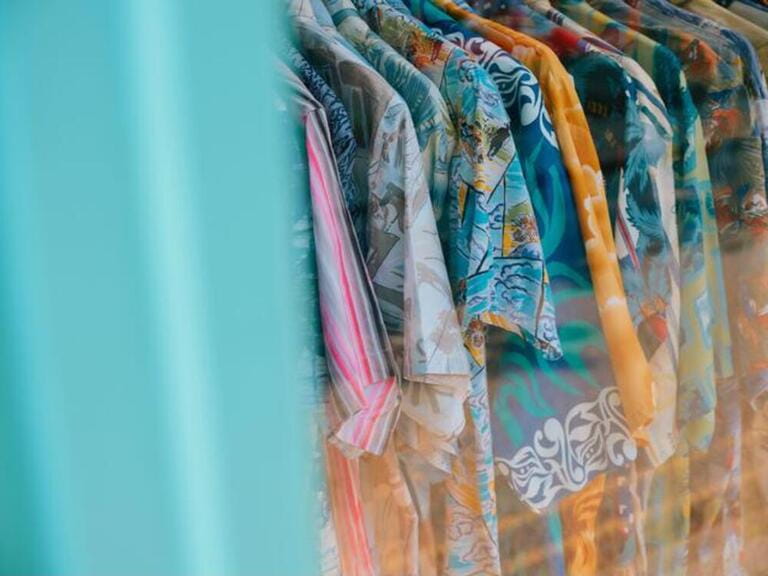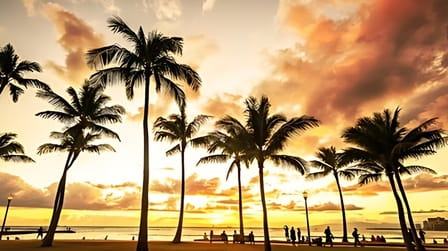Hawaiian formal attire encompasses a unique and significant aspect of Hawaiian culture. The clothing worn in formal settings in Hawaii holds deep cultural symbolism and reflects the rich heritage of the islands. Understanding what constitutes Hawaiian formal attire is essential not only for those residing in Hawaii but also for visitors and individuals interested in appreciating and respecting different cultures.
In Hawaiian culture, clothing goes beyond mere practicality, serving as a powerful form of expression. Hawaiian formal attire embodies the values, traditions, and historical significance of the Hawaiian people. By delving into the world of Hawaiian formal attire, one gains a deeper understanding of the cultural nuances and artistic expressions woven into the fabric of Hawaiian society.
Whether attending a wedding, a formal event, or participating in a cultural celebration, knowing what constitutes appropriate Hawaiian formal attire is key. By learning about the origins, key elements, and cultural significance of Hawaiian formal attire, individuals can engage with the culture in a respectful and meaningful way. Through this exploration, a deeper appreciation for the diversity and beauty of Hawaiian traditions emerges, fostering cross-cultural understanding and connection.
Origins of Hawaiian Formal Attire
Hawaiian formal attire finds its roots in the historical clothing traditions of the islands. The clothing worn by the early Polynesian settlers who arrived in Hawaii shaped the foundation of Hawaiian garments. These early garments were made from natural resources found in the islands, such as kapa, a cloth made from the inner bark of the wauke tree. Over time, the clothing evolved, reflecting the cultural exchanges and influences from other Polynesian regions.
Traditional Hawaiian garments played a significant role in formal attire. For men, the malo, a loincloth made of kapa, was a prominent piece worn during formal occasions. It symbolized strength and dignity. Women, on the other hand, wore the pa'u, a wraparound skirt made of kapa or other fabrics. The pa'u was often adorned with intricate designs and patterns, showcasing the skill and artistry of Hawaiian craftsmanship. These traditional garments were reserved for special events, rituals, and ceremonies, signifying the importance of the occasion and the wearer's connection to their Hawaiian heritage.
Understanding the historical background and influence of traditional Hawaiian garments helps us appreciate the depth and significance of Hawaiian formal attire. It allows us to recognize the cultural heritage embedded in each piece and the sense of identity it conveys. By acknowledging the historical roots of Hawaiian formal attire, we honor the traditions and customs of the Hawaiian people and foster a greater understanding of their cultural heritage.
Men's attire
When it comes to Hawaiian formal attire for men, there are key elements that contribute to a polished and culturally appropriate look. One of the iconic pieces is the aloha shirt, known for its vibrant and colorful prints featuring floral patterns or island motifs. Aloha shirts are typically worn tucked into dress pants, which can be either khaki or dark-colored trousers. Footwear options include leather shoes or sandals, depending on the formality of the event. Accessorizing with traditional Hawaiian elements, such as a lei (garland) or a decorative pin, adds a touch of authenticity to the ensemble.
Women's attire
Hawaiian formal attire for women often features flowing and elegant garments. One popular choice is the muumuu, a loose-fitting dress with vibrant patterns and designs. Another traditional option is the holoku, a long-sleeved gown with a high neckline and a fitted bodice. Both the muumuu and holoku are made from lightweight fabrics that allow for comfortable movement. Complementing the attire, women can choose between dress sandals or closed-toe shoes. Accessorizing with leis, hair adornments, and even a haku lei (flower crown) adds a graceful and culturally significant touch to the overall look.
Understanding the key elements of Hawaiian formal attire for both men and women helps individuals navigate appropriate attire for formal events or occasions where Hawaiian culture is being celebrated. These elements reflect the vibrant colors, patterns, and unique aesthetics associated with Hawaiian fashion. By embracing these key elements, individuals can authentically engage with Hawaiian culture and pay homage to the traditions and customs that make Hawaiian formal attire distinct.
Connection to Hawaiian heritage and identity
Each element of Hawaiian formal attire carries cultural significance and symbolism. The vibrant prints and colors found in aloha shirts and muumuus represent the natural beauty of the islands, from its lush flora to the vibrant sunsets. These patterns often have deeper meanings, such as the use of certain flowers to symbolize love, prosperity, or spiritual connections. The choice to wear traditional garments like the malo or pa'u showcases a connection to Hawaiian ancestry and cultural heritage, signifying respect for one's roots and the preservation of traditional practices.
Hawaiian formal attire serves as a visual representation of Hawaiian heritage and identity. Wearing these garments acknowledges and celebrates the unique cultural traditions that have been passed down through generations. It helps foster a sense of pride, belonging, and unity within the Hawaiian community. Moreover, Hawaiian formal attire allows individuals to express their connection to the land, the ocean, and the cultural values that are deeply ingrained in Hawaiian society.
Understanding the cultural significance and symbolism associated with Hawaiian formal attire goes beyond just the physical garments. It provides a window into the values, beliefs, and customs that shape the Hawaiian culture. By recognizing the meaning behind specific clothing choices and embracing the connection to Hawaiian heritage and identity, individuals can participate in a more meaningful and respectful way in formal events and celebrations within the Hawaiian community.
Guidelines for respectfully engaging with Hawaiian formal attire
It is crucial to approach Hawaiian formal attire with sensitivity and respect, as cultural appropriation can be a concern. Cultural appropriation occurs when elements of a culture are taken out of their original context without proper understanding or appreciation. To avoid appropriation, it is important to educate oneself about the cultural significance of Hawaiian formal attire, engage in respectful dialogue with members of the Hawaiian community, and ensure that appropriate attire is worn in appropriate settings.
- Learn about the cultural significance: Take the time to understand the historical and cultural significance of Hawaiian formal attire, including its origins, symbolism, and appropriate contexts for wearing it.
- Seek guidance from the Hawaiian community: Engage with members of the Hawaiian community, cultural practitioners, or experts who can provide insights and advice on proper engagement with Hawaiian formal attire.
- Purchase from authentic sources: When acquiring Hawaiian formal attire, support local Hawaiian businesses or artisans who create garments in a culturally respectful and authentic manner.
- Avoid misappropriation: Refrain from altering or commodifying traditional Hawaiian garments for the sake of fashion trends. Respect the integrity of the attire and its cultural heritage.
- Educate others: Share knowledge about Hawaiian formal attire with others, promoting understanding and appreciation for the culture and encouraging respectful engagement.
By following these guidelines and demonstrating cultural sensitivity, individuals can engage with Hawaiian formal attire in a respectful and responsible manner. This fosters a positive cultural exchange that honors the traditions and heritage of the Hawaiian people.
Evolving Styles and Contemporary Adaptations
Hawaiian formal attire has evolved over time, incorporating contemporary styles and influences. Today, individuals have the option to choose from a range of modern interpretations of Hawaiian formal attire. These variations may feature updated cuts, silhouettes, or fabric choices while still maintaining the vibrant colors and patterns that are characteristic of Hawaiian fashion. Contemporary adaptations allow for greater flexibility in expressing personal style while honoring the essence of Hawaiian formal attire.
Western fashion trends have also influenced Hawaiian formal attire. The fusion of Western and Hawaiian styles has resulted in innovative designs that blend traditional elements with modern aesthetics. For example, some Hawaiian formal attire may feature tailored jackets or incorporate Western-inspired accessories, such as belts or jewelry. This cross-pollination of fashion influences reflects the dynamic nature of cultural expression and the ability to adapt traditions to contemporary contexts.
The evolving styles and contemporary adaptations of Hawaiian formal attire demonstrate the resilience and adaptability of Hawaiian culture. These variations allow for creativity and individual expression while retaining the core elements that make Hawaiian formal attire distinctive. The fusion of traditional and modern influences creates a vibrant and diverse landscape within Hawaiian fashion, showcasing the ongoing evolution and relevance of Hawaiian formal attire in today's world.
Conclusion
Hawaiian formal attire holds a special place within the cultural fabric of Hawaii. Understanding the essence of Hawaiian formal attire goes beyond simply knowing what to wear; it is a gateway to appreciating and respecting the rich cultural heritage of the Hawaiian people. By exploring the origins, key elements, cultural significance, and respectful engagement guidelines, individuals can engage with Hawaiian formal attire in a meaningful way.
Hawaiian formal attire represents more than just garments; it represents the identity, traditions, and values of the Hawaiian people. It serves as a visual expression of Hawaiian heritage and fosters a sense of pride and belonging within the Hawaiian community. By embracing Hawaiian formal attire, individuals participate in a celebration of culture and contribute to the preservation of Hawaiian traditions.
As Hawaiian formal attire continues to evolve and incorporate contemporary styles, it is important to approach it with cultural sensitivity, avoiding misappropriation and engaging in respectful dialogue. By educating ourselves, seeking guidance from the Hawaiian community, and supporting authentic sources, we can ensure that our engagement with Hawaiian formal attire is genuine, respectful, and rooted in cultural understanding.
Ultimately, embracing Hawaiian formal attire allows us to forge connections, foster cross-cultural appreciation, and celebrate the beauty and diversity of Hawaiian culture. By embracing the traditions and symbolism embodied in Hawaiian formal attire, we contribute to the preservation and continuation of Hawaiian cultural heritage for future generations to cherish and respect.












